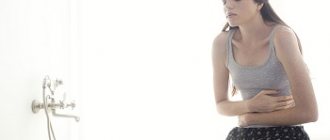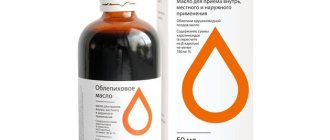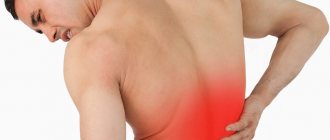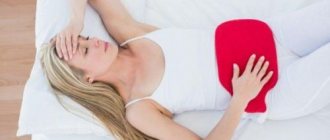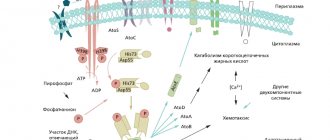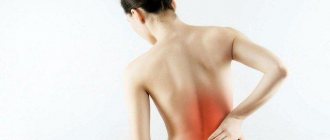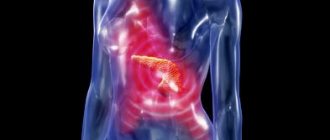Pain in the back of the head is a fairly common problem. And she has many reasons. Therefore, it is important to find their problems in order to feel relief. Let's find out together with a specialist how to do this.
Headaches in the back of the head can have several different causes. For example, it may only be muscle damage due to a minor injury, or it may be a secondary symptom of other pathologies. The type and location of pain can play a critical role in diagnosing the cause. If the pain is severe and repeated, be sure to consult a doctor.
Causes of pain in the back of the head in an adult
“Pain in the back of the head itself does not indicate the cause of this pain,” explains neurologist Elena Gaivoronskaya.
– The doctor assesses the frequency of pain, its intensity, duration, nature (pulsating, pressing, stabbing), associated symptoms. Only on the basis of all this data can a diagnosis be made. There are a number of reasons why headaches may occur predominantly in the back of the head.
headaches .
This is the most common cause of pain in the back of the head. Such pain can last from 30 minutes to 7 days. Such pain can be caused by severe stress, overwork, lack of sleep, malnutrition, poor posture or not drinking enough water.
Patients with this problem usually feel tension in the back or front of the head. The pain can range from dull to severe.
Migraine.
Another common type of headache that often appears in childhood and gets worse with age. Migraines are most common in women. Its symptoms include severe pain on one side of the head with nausea, vomiting and blurred vision. Patients are usually sensitive to light, noise, or smell. Physical activity may increase pain. It can last from several hours to several days.
Causes of migraines include emotional or physical stress, environmental and dietary changes. Sometimes medications (such as birth control pills) can also cause migraines.
Overuse of medications or recurring headaches.
These headaches can develop if a person takes too many painkillers. They are very strong and are often accompanied by nausea, anxiety, irritability, fatigue, difficulty concentrating, memory loss and even depression.
Occipital neuralgia.
A rare but severe headache that usually begins at the base of the neck and spreads to the back of the head and then behind the ears. Often occurs when the occipital nerves, which run up the back of the neck to the base of the skull, are damaged or irritated. The pain is accompanied by a burning or shooting sensation and persists on one side of the head, but often intensifies with movement of the neck. The patient is usually sensitive to light.
Possible causes include spinal injury, tumors, nerve damage caused by diabetes, swollen blood vessels, and rarely infection.
Headaches during physical activity.
They occur as a result of stressful activities and often occur after physical exercise. This pain resembles palpitations and can last from 5 minutes to 2 days.
Often occurs after heavy weight exercise or running. But sometimes they happen after sexual intercourse or pushing in the toilet.
Headache due to arthritis.
It appears in the back of the head and intensifies with movement. May be the result of arthritis of the first, second or third vertebra. Either it is associated with changes in the bone structure of the neck or inflammation of the blood vessels in the head.
In addition, the cause of a headache in the back of the head can be:
- osteochondrosis of the cervical spine;
- high blood pressure;
- increased intracranial pressure;
- stress;
- brain tumors;
- brain aneurysm;
- subarachnoid cerebral hemorrhage;
- cervical spine injuries and traumatic brain injuries;
- meningitis.
Diagnostics
The nature of the pathology is determined by a neurologist. According to indications, an orthopedist-traumatologist, an infectious disease specialist, and other specialists are involved in the examination. The doctor finds out the time of onset, duration and nature of the pain syndrome, and identifies other symptoms. When collecting anamnesis, the doctor pays attention to possible provoking factors and the presence of chronic diseases.
Examination of the back of the head may indicate external changes (swelling, wounds, abrasions). Palpation sometimes reveals tension, muscle tightness, and enlarged lymph nodes. A neurological examination involves assessing reflexes, muscle strength, various types of sensitivity, and detecting focal disorders. To clarify the diagnosis, the following are prescribed:
- X-ray examination
. Indications for radiography of the skull are fractures of the occipital bone, for radiography of the cervical vertebrae - subluxations, spondylitis, osteochondrosis, hernias. - CT scan.
Allows you to detail the data obtained during radiography. The contrast technique displays changes in blood vessels. - Magnetic resonance imaging.
It visualizes brain tissue well and is used to study their structure, detect tumors, hematomas, areas of degeneration, and other changes. - Ultrasound methods.
Ultrasound scanning and Dopplerography make it possible to assess vascular tone, blood flow speed, and other indicators, and to form a comprehensive picture of the blood supply to the brain. - Electroencephalography.
Performed to assess the functional activity of the brain, determine the severity of cerebral dysfunction due to injuries and certain diseases - Lumbar puncture.
Performed for head injury, meningitis, encephalitis. Confirms the presence of intracranial hypertension, inflammation, bleeding. - Lab tests
. Informative for atherosclerosis, inflammatory and infectious processes, as well as somatic and endocrine diseases that provoke secondary arterial hypertension.
Examination by a neurologist
Modern methods of treatment
Treatment methods depend on the diagnosis.
Tension headaches.
They are usually treated with painkillers, massage and sometimes meditation. However, frequent tension headaches require medical supervision.
Migraine.
Treatment for this disease includes painkillers and rest in a darkened room. Doctors often recommend lifestyle changes, hormone therapy, and anti-migraine medications such as triptans to reduce the frequency and intensity of migraines.
Returning pain.
The best treatment for this type of pain is to stop taking painkillers. Yes, at first the headaches get worse, but they go away quickly.
In severe cases, you should consult a doctor - physical or behavioral therapy may be required to break the habit of using analgesics.
Occipital neuralgia.
It can be treated with heat compresses, rest, massage, physical therapy or painkillers. Severe pain may require oral muscle relaxants, nerve blocks, steroid injections, or local anesthesia. In rare cases, surgery is necessary to relieve pressure on the nerves or block pain impulses to that part of the body.
Pain during physical activity.
Taking painkillers before exercise can solve this problem. In addition, it is important to avoid stress, eat right and get enough sleep.
Why is cervical osteochondrosis accompanied by headaches and dizziness?
Headaches are a very common complaint with cervical osteochondrosis. It is often accompanied by symptoms such as dizziness, poor coordination, and blurred vision. Let's consider how changes in the spinal column during cervical osteochondrosis lead to similar symptoms.
In the transverse processes from the VI to II cervical vertebrae there are canals through which the vertebral arteries pass, supplying blood to many parts of the brain and the so-called “Frank’s nerve”. Due to degenerative changes in the joints of the spine and directly in the vertebrae, the formation of osteophytes (bone growths) occurs, which leads to a narrowing of the spinal canal and compression of elements of the neurovascular system.
Osteophytes directed to the muscles irritate them, this causes a reflex muscle spasm, which leads to compression of the intervertebral discs, aggravating the course of the disease. Osteophytes, irritating the nerve roots at the exit of the spinal column, cause pain and spasms, the localization of which depends on the affected area.
Osteophytes directed to the canal of the transverse processes irritate Frank's sympathetic nerve, which leads to spasm of the vertebral artery, and also mechanically compress this artery, provoking a violation of cerebral circulation.
An acute disturbance of cerebral hemodynamics (brain circulation) leads to the development of an ischemic attack of the brain, which leads to the appearance of symptoms of cervical osteochondrosis such as dizziness, nausea, headache, loss of coordination, and blurred vision.
Another reason for compression of the Frank nerve and the vertebral artery is displacement of the disc in the posterolateral and lateral directions, protrusion of the disc into the intervertebral canal during a hernia or protrusion (protrusion of the disc without violating its integrity).
The cause of compression of the nervous and vascular structures in the cervical spine can also be subluxation of the cervical vertebrae, their confusion relative to their natural position.
In addition, muscle spasm caused by psycho-emotional fatigue, excessive physical exertion or an uncomfortable position during sleep also leads to poor circulation in the cervical region and, as a consequence, headaches and dizziness.
Popular questions and answers
We asked neurologists to answer questions related to headaches in the back of the head.
When can a headache in the back of your head be dangerous?
“Such symptoms,” says neurologist Olga Zincheva, “can include:
- concomitant increase in body temperature;
- weakness, awkwardness;
- numbness and tingling in the limbs or one limb;
- prolonged increase in pressure, difficult to reduce;
- severe headaches;
- headaches are accompanied by nausea and vomiting;
- double vision, impaired consciousness.
When to see a doctor for a headache in the back of the head?
“There are signs,” explains Olga Zincheva, “that require medical attention:
- you have a headache for the first time for no apparent reason;
- pain lasts several days;
- there are concomitant diseases.
“You need to go to the hospital immediately,” adds colleague Elena Gaivoronskaya, “if the headache occurs suddenly, it is very intense, there was no such pain before, or if the pain is accompanied by weakness in the limbs on one side of the body, a distortion of the face, speech disorder, or lack of coordination. If you have other alarming symptoms, you should consult a doctor as planned. You should also see a neurologist if you are taking too many pain medications or if your headaches are affecting your quality of life.
Harmful daily habits for humans
At times, the answer to the question of why the back of the head and neck hurts is the incorrect location of the workspace relative to the eyes. If pain appears at the end of a work shift, this is a direct signal that work is the source of the problem. People do not pay attention to their posture, they lower their heads down, without looking up from, for example, paperwork for several hours.
To avoid heaviness in the back of the head and neck, it is necessary to place the monitor in front of the eyes. It is important to take breaks, warm up as often as your work allows, and do basic head tilts to relax your muscles.
To forget how much your neck and back of your head hurt, it is important to say goodbye to many daily bad habits. For example, many people hold a telephone receiver between their neck and shoulder. Some people are used to sleeping in a chair with their head thrown back and their chin down. Women in the modern rhythm of life are accustomed to doing everything as quickly as possible, but without caring about their health. For example, washing your hair in the sink, or leaning under the tap in the bathroom. This can become a source of pain in the neck and back of the head.
Even waking up, during which the back of your head and neck hurts and you feel dizzy, can be an alarming signal. The culprits of unpleasant sensations are the pillow and mattress. In order to prevent serious illnesses, it is worth changing the mattress to a firm one, and the pillow to one of such a height that the head is at the same level as the spine.
It is obvious that many daily habits can cause significant harm to the body. Changing habits can be easy, which will ultimately lead to healthy functioning of the body.
With tips on actions to relieve heaviness in the neck and back of the head, everyone can put their body in order. Of course, all the methods presented are not a panacea, but an excellent help in solving the problem that has arisen. Doctors should not be neglected: they will be able to tell exactly why the neck and back of the head hurt. It is important to follow these recommendations in combination, because only well-designed therapy will help you say goodbye to the disease that causes discomfort.
How to get rid of headaches with cervical osteochondrosis
To relieve headaches, including those with cervical osteochondrosis, analgesics in combination with antispasmodics help well. For severe muscle tension and irritation, nonsteroidal anti-inflammatory drugs (NSAIDs) can be used. However, it must be remembered that these drugs do not treat the underlying disease, providing only symptomatic care, and at the same time they have a number of serious side effects. Thus, analgesics and NSAIDs, including those containing diclofenac, suppress bone marrow function, lower immunity, inhibit gastric secretion, irritating its mucous membrane and provoking the development of gastritis, and reduce blood clotting. In addition, it has been proven that systematic or frequent use of diclofenac increases the risk of heart attack by 40%, and NSAIDs in general lead to the formation of gastropathy, gum ulceration, pancreatitis and aphthous stomatitis. Antispasmodics can cause the opposite effect - increase dizziness, headache, and also cause palpitations and more complex arrhythmias.
Recently, Botox injections have been used to relieve spasms. However, botuloxin is a strong poison; in addition to the unpredictable individual reaction of the body, it can cause headaches, muscle weakness up to paresis of some muscle groups, disruption of the gastrointestinal tract and respiratory system. With each repeated use, the effect of the drug decreases.
Neuroprotectors have a prolonged (long-lasting) effect, improving metabolism in brain tissue and thereby relieving pain. However, such drugs must be taken in long courses, but if used uncontrolled, they can cause dizziness, headaches, anxiety, increased blood pressure and arrhythmia.
It is important to remember that in this case, a headache is only a symptom of the disease. In addition to symptomatic care, it is necessary to direct efforts to fight the disease itself - the spine needs to be treated.
Conservative treatment of osteochondrosis, in addition to the use of painkillers and antispasmodics, should include the use of hydroprotectors, vitamin complexes, as well as exercise therapy and physiotherapy.
Electrophoresis is the most commonly used physiotherapy procedure. Its essence is a local increase in temperature and improvement of blood circulation, which relieves muscle spasms, eliminates pain and speeds up the healing process. In general, any thermal procedures relieve muscle spasms and improve blood circulation.
Magnetotherapy involves the use of low-frequency magnetic field inductors aimed at the problem area, which leads to local dilation of blood vessels, improved oxygenation and metabolism, accelerated elimination of toxins and reduced blood viscosity. Thanks to this, magnetic therapy has an anti-inflammatory, analgesic and anti-edematous effect.
Effective assistance in the treatment of osteochondrosis of the cervical spine can be provided by a modern drug - the therapeutic pain-relieving anti-inflammatory patch NANOPLAST forte.
